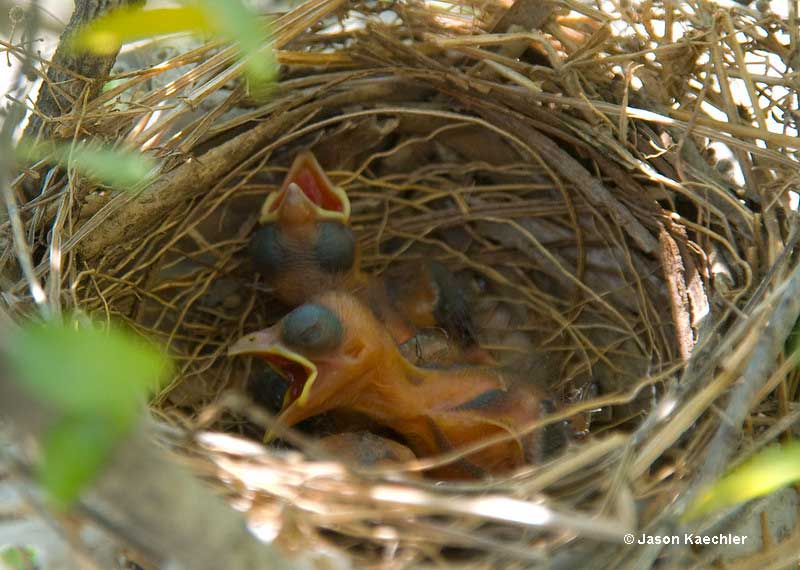
Most animal babies differ from their parents. However, in the avian world, those differences are quite striking. The truth is most baby birds look almost nothing like their parents.
Baby birds are complete representatives of their species, with all the characteristic traits already encoded in their DNA. Still, it will take several stages of development for them to reach that final form.
The developmental road to adulthood highly varies between bird species and families. What are the most captivating facts about baby birds? How to tell them apart?
Let’s take off and find out.
On this page
What Do Baby Birds Look Like?
Not all chicks are hatched equal. Regarding their young’s development, there are two evolutionary pathways among bird species, giving way to two kinds of baby birds.
Altricial Chicks
Altricial birds are born helpless – blind, immobile, with undeveloped wings and pinkish skin covered only with thin, fluffy downy feathers. To thrive and grow, they require full-time care from their parents.
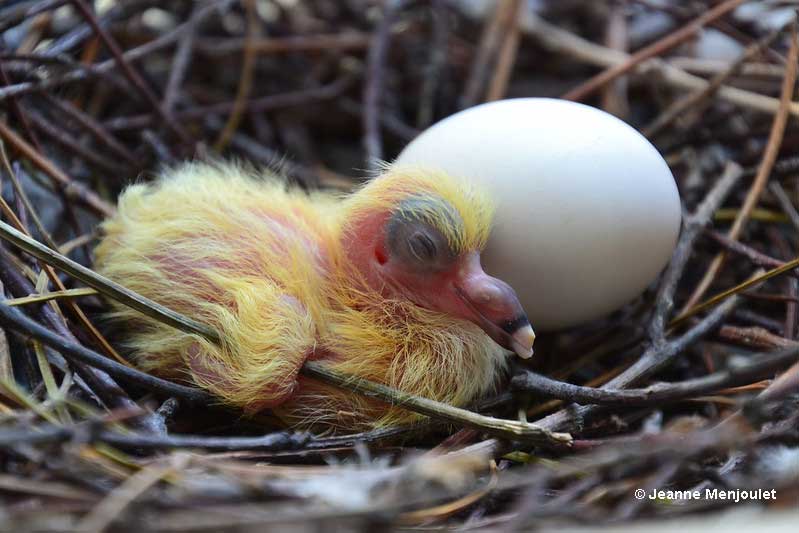
Newly hatched baby pigeon
Altricial baby birds rely on mom and dad for feeding and warming, but also for active protection – as you can imagine, helpless young chicks are ideal easy prey for many predators.
Here are some of the most well-known birds with altricial chicks:
- Songbirds (sparrows, finches, tits, juncos…)
- Corvids (crows, magpies, ravens)
- Birds of prey (hawks, eagles, owls)
- Parrots
- Pigeons and doves
Precocial Chicks
In precocial bird species, babies hatch much better adapted for autonomy and survival. They are mobile and have developed eyesight (open eyes), enabling them to forage independently and follow their parents around.
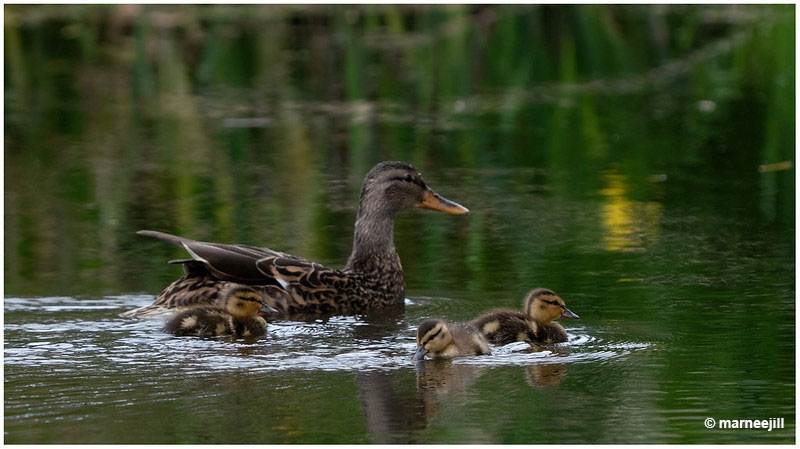
Typical precocial birds include:
However, most precocial chicks are far from miniature adults – for example, they have underdeveloped wings, juvenile feathers, a different body plan, and vocalize differently. Baby chickens or ostriches are a typical example of precociality.
Related: How did birds get their names?
Interestingly, we find an extreme evolutionary “upgrade” of precociality in the so-called superprecocial birds.
Megapodes are a typical example of superprecociality. These big, strange, solitary hens don’t incubate their eggs but create huge mounds in which they bury them to keep them warm. The megapode chicks hatch fully developed – with adult body plan and feathers. In some species, chicks are even able to fly on the same day they hatch.
Nests and Eggs
The bird nest is where all baby birds start their life – nests are characteristic structures birds build to raise their young. They can vary greatly in shape, size, and construction.
However, building a nest is not enough. The eggs need incubation at a certain temperature to hatch. In most species, parents warm the eggs by sitting on the nest, providing their body heat to the eggs.
The Simple Ostrich Nests
Ostrich nests are a prime example of primitive nest building (we can informally call it nesting minimalism if we want to sound kind).
Like many other primitive flightless birds – Ratites – their nests are simply wide and shallow depressions in the dirt. In the case of ostriches, they are dug out by males; no other materials are added.
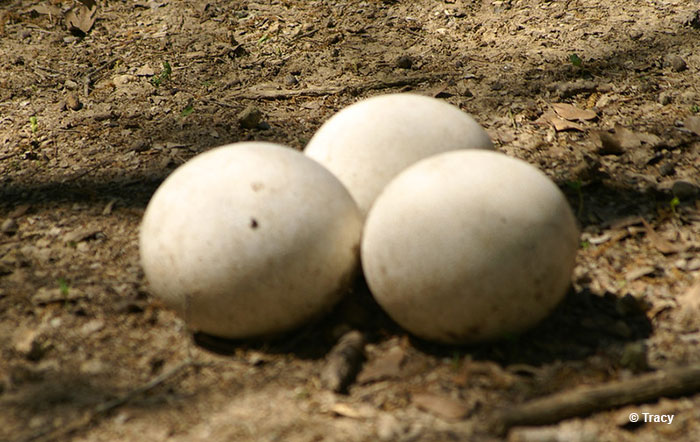
Ostrich eggs
Ostriches are a precocial species, so besides their highly-protective daddy, their chicks don’t need much nest infrastructure anyway. After hatching, they will run around freely in no time.
The ostrich nests are also colonial. Each female from the flock will lay 7-10 eggs in the same nest to be incubated by the male. However, there’s a catch – the dominant female always lays her eggs closer to the center, so they have the top incubation position and, thus, the best chance of hatching.
Birds That Weave Nests
On the other side of the spectrum, we have elaborate nests such as those made by Weavers.
These finches are known (and named) for their intricate nests woven from grasses and other long, flexible plant material they manipulate with their beaks and feet.
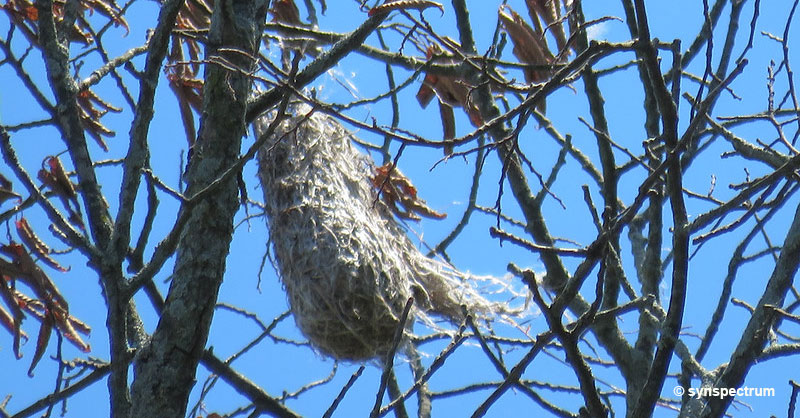
The male is in charge of nest construction and his building process is a part of the mating ritual. The nest-weaving skill is a strong consideration for picky female weavers choosing their partners.
The weaver’s chicks are altricial and, helpless as they are, surely benefit from a fine-engineered nest with an opening difficult for predators to approach.
How To Tell Baby Birds Apart?
Unfortunately, distinguishing between avian species based on the looks of immature birds is one of the trickiest tasks in bird watching. It is easy to mistake a chick of one species for another.
Experience and viewing pictures or live chicks of different bird species in your area over the years is the only way to build knowledge to confidently recognize baby birds.
On the other hand, distinguishing baby birds – hatchlings and nestlings – from adults of the same species is not difficult.
What Do Baby Birds Eat?
The nutrition of baby birds. One common thread is that all baby birds demand the best-quality, high-calorie, protein-rich diets.
It is no surprise that swallows and swifts that are 100% insectivores also feed their nestlings an insect diet. But even birds who are mostly herbivorous as adults, such as sparrows, feed their chicks with protein-rich insects and other invertebrates.
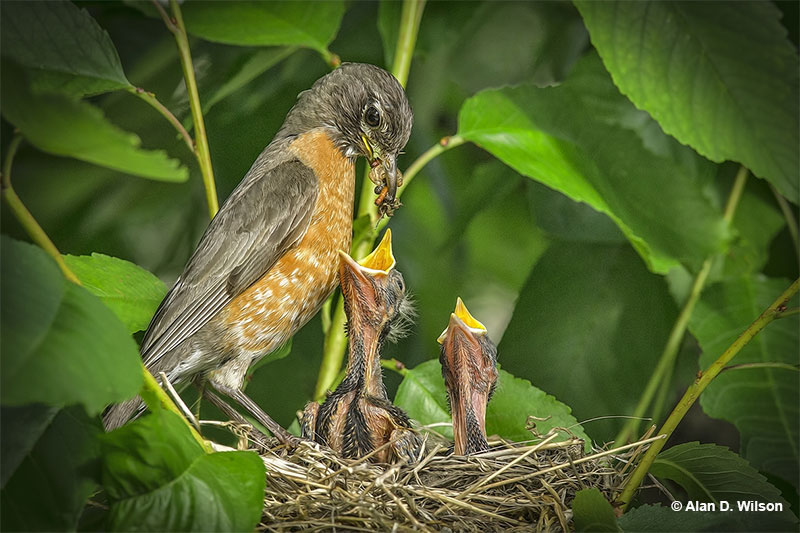
Pigeons, flamingos, and Emperor Penguins have another offspring-feeding strategy – crop milk.
Read more: Baby penguins & reaching adulthood
Crop milk is a secretion of the crop’s inner lining, packed with protein and fat (but interestingly, no carbohydrates). Both males and females can produce the crop milk; they regurgitate it, and the chicks “drink” directly from their beaks. Crop milk is sometimes also called “pigeon milk.”
Frequently Asked Questions
What is the name of a baby bird?
Baby birds are generally called “bird chicks.” However, there are several life stages of young birds that all have different names.
‘Hatchlings’ are baby birds who have recently hatched; for altricial birds, it means that they’re naked, blind, and immobile. ‘Nestlings’ are baby birds that can’t fly yet and thus are nest-bound, but by then they’re better developed than hatchlings.
Finally, ‘Fledglings’ are baby birds that have flight feathers on their wings, mostly-adult or adult-like plumage, and are learning to fly and fend for themselves (but still mostly depend on their parents).
What do baby birds look like?
Baby birds are usually nothing like their parents. They lack the adult plumage – instead, they have either the fluffy downy feathers or juvenile plumage that looks dull, uneven, and messy when compared to the adult version.
The beaks of baby birds also look different. In many species, the baby’s bill has a different, brighter color than the adult’s beak. For example, crow babies have salmon-pink bills, while the adult version is trademark-crow-black. Many songbirds, including robins, have highly bright yellow beaks and gapes that guide the parents to place that juicy caterpillar right into their mouths.
Also, baby bird bills are smaller but broader. Most passerine birds have enlarged and colorful rictal flanges – the fleshy, bright mouth corners. In simple terms, baby and fledgling birds look more “mouthy” than adults.
Young baby altricial birds also have bulging eyes – closed in hatchlings, and opening as chicks grow.
What does a fledgling bird look like?
Fledglings look more similar to adult birds, but there are still differences. The fledgling plumage is duller and scruffy, with some downy fluff still protruding here and there.
Another cue is the remaining rictal flange enlargement or gape flange – soft, meaty, and bright mouth corners/beak edges.
Importantly for observers who don’t always get to view a bird from up close, fledglings are universally clumsier and less alert than their parents, making short and unsteady attempts at flying and acting more erratic in general.
Things get a bit more complicated with juveniles – nearly adults, but still immature. In many songbirds, fledglings of both sexes often look strikingly akin to adult females. Still, the juvies are usually slimmer, scruffier, and duller in color.
How long do baby birds stay in the nest?
How long the baby birds stay in the nest depends on the species. On average, songbirds such as juncos, sparrows, and tits usually take only two to three weeks to fledge. Baby pigeons need about a month before they join their parents in flight and foraging.
However, large raptors coming of age can be significantly longer.The Californian Condor chicks can take as much as 5-6 months – or up to 180 days – to fledge, and need their parent’s assistance for at least 6 more months.
What to do with a baby bird that fell out of its nest?
The best thing to do when you find an abandoned baby bird is to return it to its nest. If the nest is too high or destroyed, but you still see the parent birds around, you can put the chick into – such as a small open box or a woven basket – and put it at the highest spot on the same tree or a building you can reach.
Many people think it’s a great idea to take in a seemingly-orphaned chick and raise it themselves. However, this should only be the last resort when you have depleted all other options.
Firstly, raising a baby chick, especially if it’s an altricial hatchling, is very complicated and demanding – they demand professional care as many things can go wrong. Secondly, even if you succeed, due to imprinting on humans, the rescue will lack basic survival skills that should be taught by the same-species parents.
Thus, if there is no way to return the baby bird to its parents, please contact a certified wildlife rehabilitator or a rescue center.
Read more: What to do if you find a baby bird
